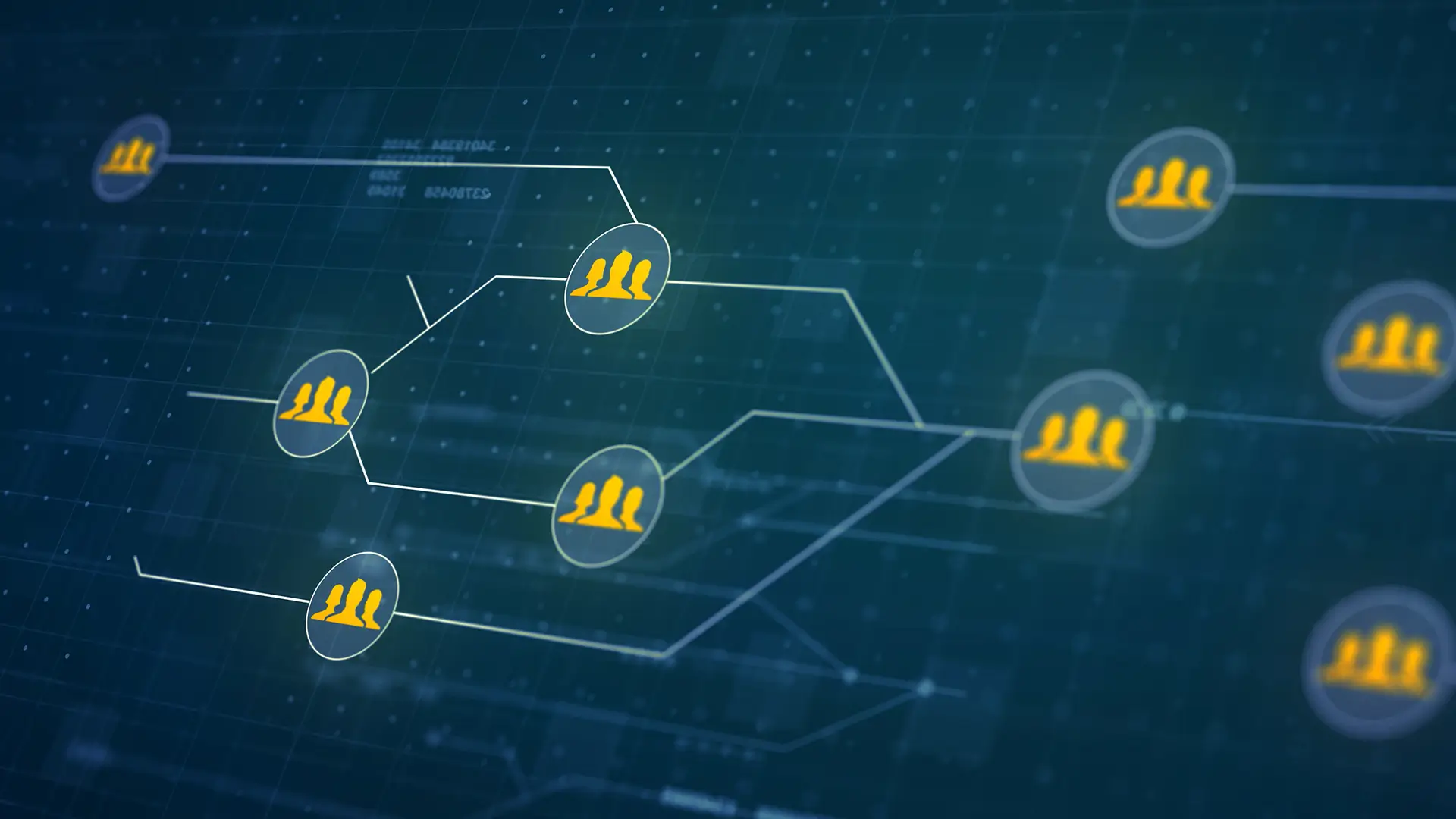Introduction
The software development landscape is evolving rapidly, necessitating faster release cycles and elevated quality standards. Traditional test automation, though valuable, often needs help keeping up with these demands. Enter Artificial Intelligence (AI), revolutionizing our approach to test automation.
While tools like ChatGPT and Google Gemini often come to mind when discussing AI, the technology encompasses much more and is advancing daily. This blog will examine the benefits of integrating AI into automated testing and how it can be a powerful ally in crafting robust and reliable test plans.
AI-Driven Test Automation
AI-driven test automation leverages artificial intelligence to enhance and streamline the software testing process. AI significantly accelerates test automation, boosting accuracy by rapidly identifying errors and root causes, recommending fixes, and connecting related tests. It can automatically retrieve data, execute tests, and detect bugs and other impacted tests, making the process more efficient and reliable.
Critical Advantages of AI-Driven Test Automation
AI enhances test automation by leveraging machine learning to learn from data, recognize patterns, and make informed decisions. Here are the key advantages:
- Enhanced Test Efficiency: AI automates routine tasks such as test data generation and repetitive UI interactions, allowing testers to concentrate on strategic and exploratory testing.
- Improved Test Coverage: AI analyzes application behavior to identify gaps in test coverage and recommends new scenarios for a more thorough evaluation.
- Intelligent Self-Healing Tests: AI adapts to changes in the application under test (AUT), reducing false positives and maintaining test stability, which saves time.
- Smarter Bug Detection: AI-driven visual testing tools can catch subtle regressions and analyze test data to identify defect patterns and root causes.
- Reduced Testing Time: AI reduces testing cycles by automating repetitive tasks and prioritizing critical areas.
- Improved Software Quality: AI detects bugs earlier in the development cycle, leading to higher-quality software releases.
Read: Mitigating false positives in visual testing for improved outcomes
AI Technologies Enhancing Test Automation Tools
Several AI technologies are revolutionizing automated testing. Here's a look at their applications:
- Machine Learning: Machine learning algorithms enhance automated testing by learning from historical data and improving over time. These models can predict potential challenges and refine test processes by analyzing past test results, bug trends, and application behaviors.
- Natural Language Processing: This technology bridges the gap between technical and non-technical stakeholders by enabling automated testing systems to understand human language. It translates user stories and requirements into executable test cases, aligning testing with business needs.
- Predictive Analytics: Predictive analytics uses AI to analyze historical data and forecast future outcomes. Test automation can identify potential faults, performance bottlenecks, and defect areas, allowing for proactive testing and issue resolution.
AI's Impact on Automated Testing Tools
AI boosts automated testing tools by incorporating artificial neural networks and natural language processing, expanding traditional testing capabilities. Here's how AI contributes:
- Case Generation and Optimization: AI algorithms generate and optimize test cases by evaluating application requirements and user stories. By learning from previous test cycles and user interactions, AI eliminates redundancy and ensures comprehensive coverage.
- Forecasting Analytics: AI analyzes past data and trends to identify potential failures and vulnerabilities. This predictive capability helps prevent significant defects before they reach production, allowing testers to focus on high-risk areas.
- Test Data Management: AI excels at creating and managing test data through techniques like data masking, synthesis, and anonymization. This ensures data relevance and security, addressing privacy concerns and compliance requirements.
- Natural Language Processing (NLP): AI-powered NLP translates human language into executable test scripts, enabling non-technical stakeholders to contribute to the testing process and ensuring test cases align with business requirements.
Also read: 5 Data-Driven Reasons to Use Audio Visual AI for End-to-End Testing
Different Strategies for Leveraging AI in Accelerating Automated Testing
Harnessing AI and machine learning can significantly enhance the speed and efficiency of test automation. Here are effective strategies to achieve this:
- AI-Powered Test Generation: AI algorithms analyze application behavior and usage patterns to automate the creation of test scenarios, data, and scripts. This reduces manual effort and broadens test coverage.
- Intelligent Test Prioritization: Use AI-based algorithms to prioritize test cases by assessing risk, impact, and failure probability. This helps address critical issues more swiftly and obtain faster application quality feedback.
- Smart Test Execution: Optimize test performance through AI-driven scheduling and parallel execution across various environments and devices. AI determines the most effective approach based on past data and resource availability.
- Automated Test Maintenance: Leverage AI to automatically update and manage test scripts in response to application changes such as bug fixes and feature updates. AI ensures that test scripts remain accurate and relevant.
- Predictive Analytics: Apply AI-driven predictive analytics to identify potential issues and bottlenecks before they impact the testing process. AI analyzes patterns and anomalies to enable proactive problem-solving.
- Anomaly Detection: Utilize AI-based algorithms to detect unusual behavior or performance variations during test execution. This allows for rapid identification and investigation of test results and metrics anomalies.
- Self-Healing Tests: Implement AI-powered self-healing mechanisms to address common test failures automatically. AI can diagnose the causes of failures and apply fixes or workarounds to maintain test functionality.
- Continuous Learning: Improve AI models using insights from test results, user interactions, and real-world events. Iterative learning enhances AI's accuracy and effectiveness in supporting test automation.
Key Applications of AI in Test Automation
AI's influence on test automation extends well beyond UI testing. Here are some key applications:
- API Testing: AI automates the analysis of API behavior and generates comprehensive test cases, including edge cases and error scenarios. This enhances API testing and minimizes integration issues.
- Performance Testing: AI evaluates performance data to predict potential bottlenecks, enabling early intervention to address performance issues during development.
- Test Data Management: AI simplifies the management of large test datasets by identifying and enriching existing data, reducing the need for manual data creation, and improving data management.
- Visual Locators: AI-driven UI testing uses visual locators to identify components in a web application, even if their locators change. This eliminates the need for hard-coded Accessibility IDs and utilizes OCR and image recognition to detect visual regressions and validate elements.
- AI Analytics for Test Automation Data: AI enhances test data analysis, efficiently identifying and classifying faults. Advanced AI systems can also detect false negatives and true positives, improving the reliability of test results.
Challenges and Considerations in AI-Driven Test Automation
While AI-driven test automation offers numerous benefits, it also presents several challenges:
- Initial Investments: Implementing AI in test automation requires significant time and resources. This includes integrating AI tools with existing frameworks and training employees to use them effectively.
- Data Quality and Availability: AI systems use high-quality data to function correctly. Organizations must guarantee access to relevant and reliable data throughout the model training and testing phases.
- Algorithm Transparency: AI algorithms can often be opaque, making their decision-making processes challenging to understand. Ensuring transparency and interpretability in AI models is crucial for building trust and meeting regulatory standards.
- Continuous Monitoring and Maintenance: AI models need regular updates to adapt to new data and changing application requirements. Monitoring and maintenance are essential to keep these models reliable and effective in test automation.
Check out: What is Continuous Monitoring in DevOps?
The Evolving Role of AI in Test Automation
Artificial intelligence is evolving rapidly, offering exciting possibilities for test automation. We can expect increasingly sophisticated, intelligent test automation solutions as AI algorithms advance. Although many AI technologies are still emerging, their potential to transform testing is clear. Future AI-powered tools could automate tasks and adapt to complex software behaviors, leading to innovations like self-healing tests that adjust to UI changes and AI-driven test prioritization based on risk and user impact.
The future of AI-based testing promises to revolutionize software testing, making it more efficient, comprehensive, and reliable. It's essential to recognize that AI is meant to enhance, not replace, human expertise. The most effective strategy combines AI's strengths with human insight to achieve top-quality software.
HeadSpin's Advanced Test Automation Features
HeadSpin's AI-driven Platform offers a cutting-edge suite for advanced test automation designed to address modern testing needs:
- AI and Machine Learning Integration: Leverage AI and ML to analyze test results intelligently, speeding up issue detection and resolution.
- Cross-Platform Testing: Perform comprehensive testing across various devices, operating systems, and network conditions.
- Real User Experience Monitoring (RUM): Obtain real-time insights into global user interactions with your applications via HeadSpin's extensive device network.
- Performance Metrics: Use sophisticated automation frameworks to measure key performance metrics, including response times, latency, and throughput.
- Scripting and Framework Support: Benefit from robust support for diverse scripting languages and popular automation frameworks, offering flexibility in test script creation.
- Scalability and Parallel Testing: Execute tests simultaneously across multiple devices and environments for efficient large-scale testing.
- Network Virtualization: Simulate various network conditions, including bandwidth and latency, to test under realistic scenarios.
- CI/CD Integration: Seamlessly integrate automated testing into Continuous Integration/Continuous Deployment pipelines, enhancing development.
- Security Testing: Identify vulnerabilities with built-in security testing features.
- Customizable Dashboards and Reporting: Utilize advanced reporting tools and customizable dashboards for practical test result analysis.
- Test Maintenance and Reusability: Optimize testing efforts by easily maintaining and reusing test scripts over time with HeadSpin's AI-driven platform.
Wrapping Up
AI is revolutionizing test automation, enhancing software testing with improved efficiency, accuracy, and comprehensive coverage. By leveraging AI's cognitive abilities, organizations can deliver exceptional products in a competitive market. As AI technology evolves, test automation tools—including those used for Salesforce testing—will drive further innovation and efficiency throughout the software development lifecycle. This advancement enables companies to innovate confidently while ensuring excellent user experiences.
HeadSpin's AI-driven platform integrates expert QA engineers and strategically chosen metrics to deliver high-quality software. Its capabilities help organizations tackle testing challenges effectively and achieve software development excellence.
FAQs
Q1. Which industries gain the most from AI-driven test automation?
Ans: AI-driven test automation offers significant benefits across diverse sectors, including finance, healthcare, e-commerce, telecommunications, and manufacturing. These sectors depend on comprehensive software testing for compliance, security, reliability, and optimal user experiences, and AI enhances testing efficiency and effectiveness to meet these demands.
Q2. How does AI enhance the performance of test automation tools?
Ans: AI enhances test automation tool performance by automating repetitive tasks like test case generation and execution, using advanced analytics for greater accuracy, adapting to software changes with self-learning capabilities, and offering predictive insights to foresee potential issues before they occur. This results in quicker testing cycles, improved reliability, and reduced manual effort.
Q3. Can AI automate coding tasks?
Ans: AI can automate many routine and repetitive coding tasks, enabling developers to concentrate on more complex and creative aspects. For instance, AI algorithms can analyze extensive data to suggest code optimizations, improving efficiency and performance.



























.png)



















-1280X720-Final-2.jpg)






